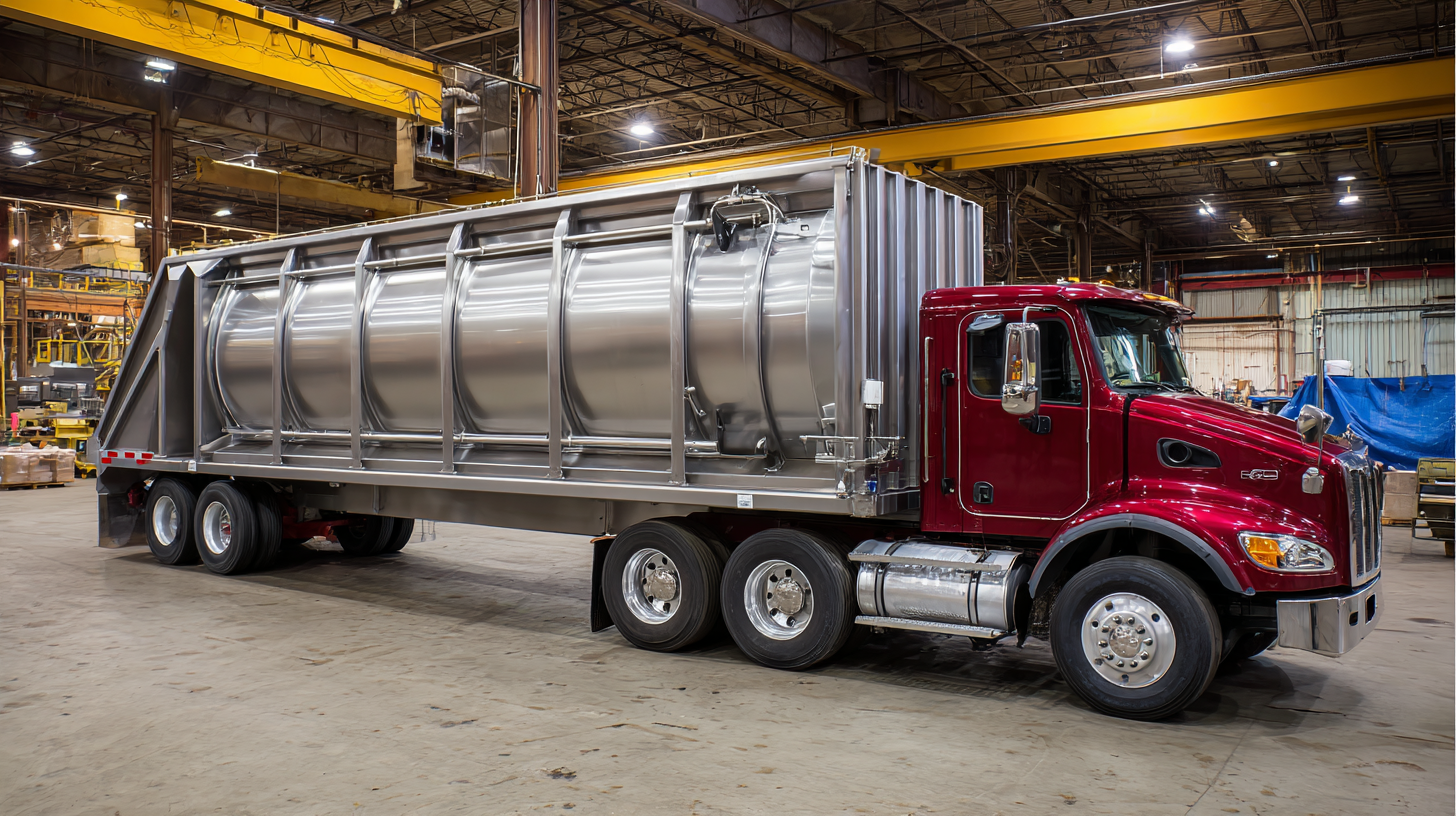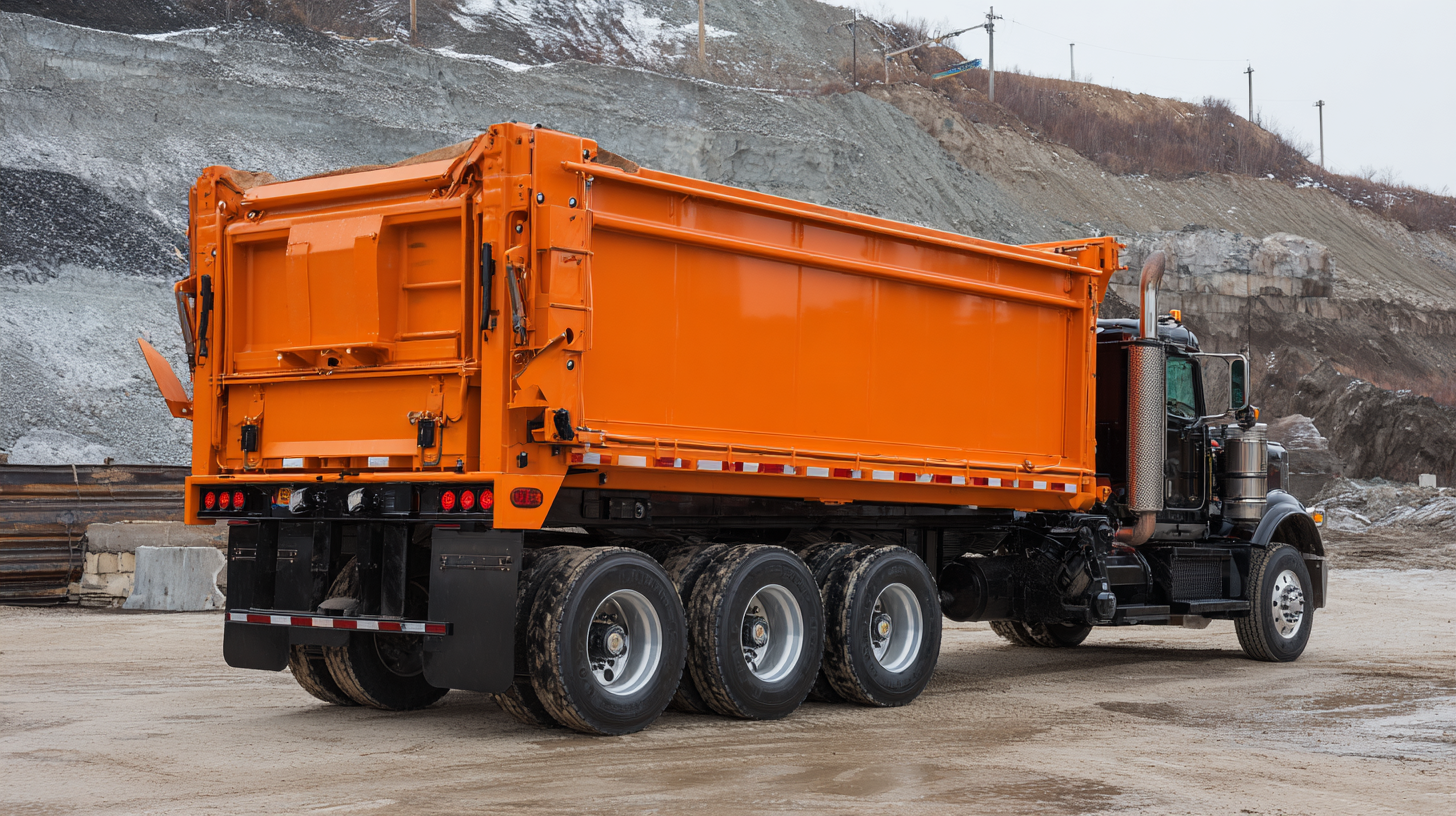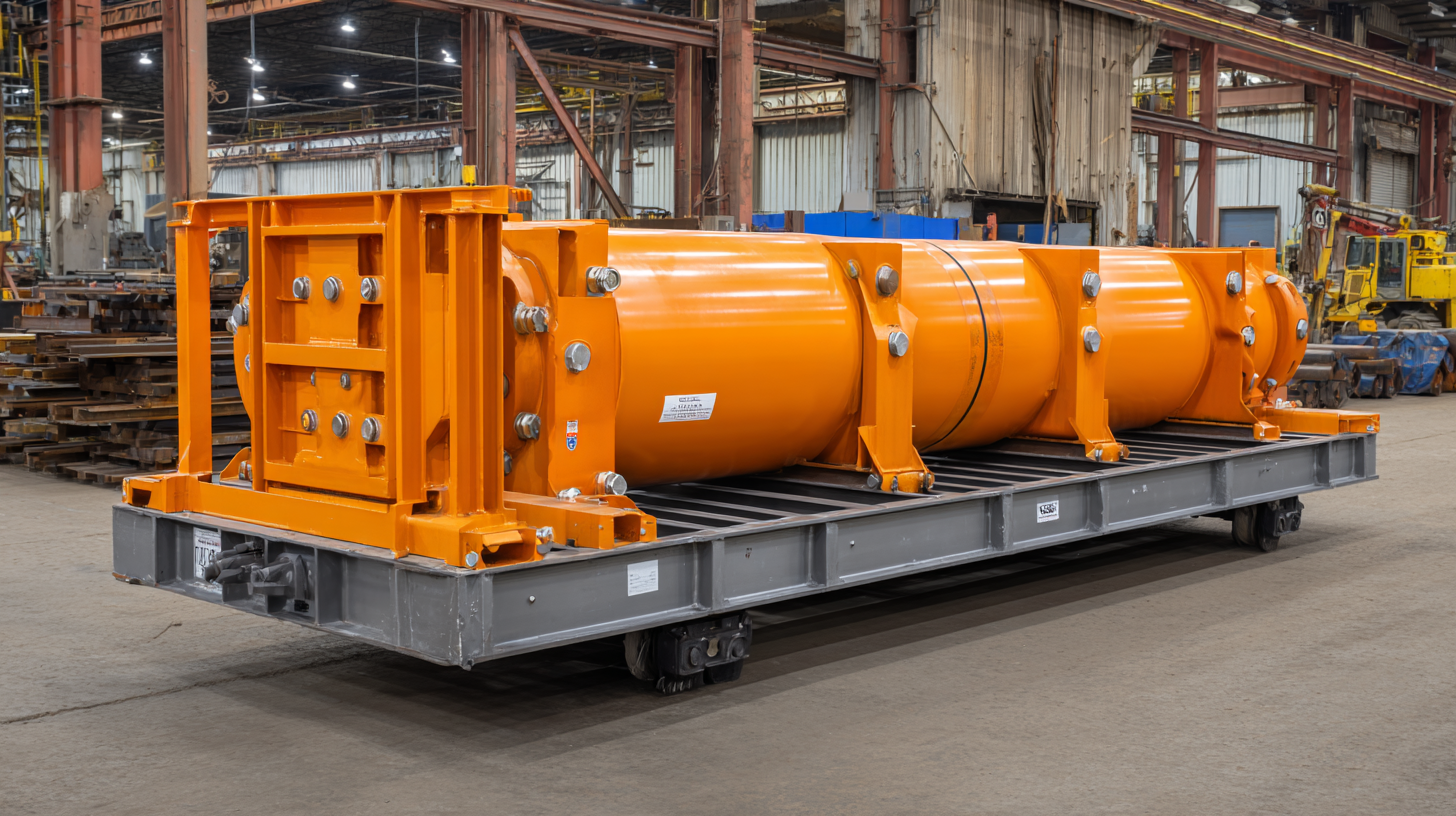 +86-13349293098
+86-13349293098
Leave Your Message
-
 Contact Phone
Contact Phone -
 Contact WhatsApp
Contact WhatsApp -
 Contact Email
Contact Email



When it comes to choosing the right Dump Bed Cylinder for your truck or trailer, making an informed decision can significantly enhance your operation's efficiency and durability. The Dump Bed Cylinder is a critical component that impacts the overall performance of your dump bed system, whether it's for construction, landscaping, or agricultural purposes. With a myriad of options available on the market, selecting the best type that suits your specific needs can feel overwhelming.
In this blog, we will share five smart tips that will guide you in identifying and selecting the most suitable Dump Bed Cylinder. By considering factors such as compatibility, load capacity, and cylinder design, you'll be better equipped to make a choice that not only maximizes productivity but also ensures safety and reliability in your work environment.

When it comes to construction vehicles, the dump bed cylinder is a critical component that ensures efficient loading and unloading of materials. Understanding its role and functionality is paramount for any fleet manager or contractor. The dump bed cylinder operates by using hydraulic pressure to lift the bed, facilitating the quick and effective movement of heavy loads. A well-functioning cylinder not only enhances productivity but also minimizes the risk of accidents on site caused by equipment malfunction.
When selecting a dump bed cylinder, it's essential to consider the specific needs of your operations. Look for cylinders that offer a balance between strength and weight. Heavy-duty options may suit larger vehicles, while lighter models can improve fuel efficiency in smaller trucks. Furthermore, the compatibility of the cylinder with your vehicle's mechanical setup is crucial; mismatches can lead to significant performance issues.
Another tip is to evaluate the cylinder’s material and construction. Cylinders made from high-quality materials such as stainless steel or heavy-duty aluminum are more resilient to wear and corrosion, extending their lifespan in harsh construction environments. Always consult with manufacturers or experts to ensure you are investing in the right option that meets your operational demands.

When selecting a dump bed cylinder, understanding the key features that contribute to quality is crucial for optimal performance and longevity. One of the most important characteristics to consider is the bore size, which directly impacts the lifting capacity. According to a report by the American Trucking Association, using the right bore size can increase lifting efficiency by up to 15%. Typically, a bore size of 3 to 5 inches is recommended for most light to medium-duty applications.
Additionally, the construction material of the cylinder plays a significant role in its durability and resistance to wear and tear. High-quality dump bed cylinders often utilize materials like high-strength steel and dual-acting seals that can withstand harsh environments. A study conducted by the Industrial Supply Association found that cylinders made from corrosion-resistant alloys have a lifespan that is 30% longer than those made from standard steel. This durability is essential not only for reducing replacement costs but also for maintaining safety and performance standards in heavy-duty operations.
This bar chart illustrates the key features to consider when selecting a dump bed cylinder, focusing on the evaluation of different attributes important for functionality and durability.
When choosing the right dump bed cylinder, understanding the different types available is crucial for optimal performance in your utility terrain vehicle (UTV) or side-by-side model. Hydraulic cylinders come in various designs, including double-acting and telescopic configurations. According to industry reports, double-acting cylinders are ideal for applications requiring lifting and lowering in both directions, offering better control and efficiency. In contrast, telescopic cylinders provide an extended stroke length in a compact size, making them suitable for tight spaces while maximizing lift height.
In addition to the type of cylinder, it’s essential to consider the material and size. Most modern dump bed cylinders are constructed from high-strength steel or aluminum, ensuring durability and resistance to corrosion. Research indicates that cylinder diameter significantly affects load capacity and performance; larger diameters can handle heavier loads more effectively. Furthermore, matching the hydraulic pressure specifications of your vehicle with the cylinder rating can prevent potential failures. Leveraging this knowledge when selecting a cylinder ensures enhanced efficiency and longevity for your dump bed system, ultimately improving your overall hauling experience.
When it comes to maintaining your dump bed cylinder, proper upkeep is crucial to ensure longevity and efficiency. Regular inspections should be a top priority; check for any signs of leaks or damage to the seals and hoses. Identifying potential issues early on can prevent more significant problems down the line.
In addition to routine inspections, lubrication is essential for the smooth operation of your dump bed cylinder. Use the appropriate lubricant to ensure all moving parts operate without friction. A well-lubricated cylinder can improve performance and reduce wear and tear. Lastly, always ensure that the hydraulic fluid is at the proper level and condition, as this will significantly affect the function and responsiveness of your cylinder. By following these simple maintenance tips, you can help extend the life of your dump bed cylinder, keeping your equipment reliable for the long haul.
| Tip | Description | Importance | Maintenance Frequency |
|---|---|---|---|
| 1. Assess Load Requirements | Determine the weight your dump bed will carry to choose the right cylinder strength. | Ensures safety and prevents equipment failure. | Before purchase |
| 2. Check Cylinder Dimensions | Measure available space in your dump truck to ensure a proper fit. | Avoids installation issues and ensures optimal performance. | Before installation |
| 3. Evaluate Hydraulic Fluid Compatibility | Ensure the chosen cylinder works with your hydraulic fluid type. | Prevents corrosion and extends cylinder life. | Monthly checks |
| 4. Inspect for Leaks Regularly | Look for signs of hydraulic fluid leaks and address them immediately. | Maintains hydraulic power and efficiency. | Weekly inspections |
| 5. Schedule Professional Maintenance | Have a technician assess and service your hydraulic system regularly. | Ensures reliability and extends the lifespan of components. | Every six months |
When selecting a dump bed cylinder, it's crucial to consider reputable brands that have established themselves in the market for their reliability and performance. Top brands like Parker, Hooper, and Brehob are known for manufacturing high-quality dump bed cylinders that can withstand heavy-duty applications. Parker, for example, offers a wide range of hydraulic solutions that ensure optimal performance and durability, making it a favorite among professionals in the industry. Their commitment to innovation and quality control ensures that users get the best value for their investment.
Another brand worth mentioning is Hooper, which specializes in hydraulic cylinders for various applications, including dump beds. Their cylinders are designed to provide maximum lifting capacity while maintaining ease of operation. Additionally, Brehob has built a solid reputation for its robust products and excellent customer service, often providing customized solutions to meet specific needs. When selecting a dump bed cylinder, choosing from these reputable brands can significantly enhance your equipment's efficiency and longevity, ensuring that you can tackle any hauling task with confidence.







